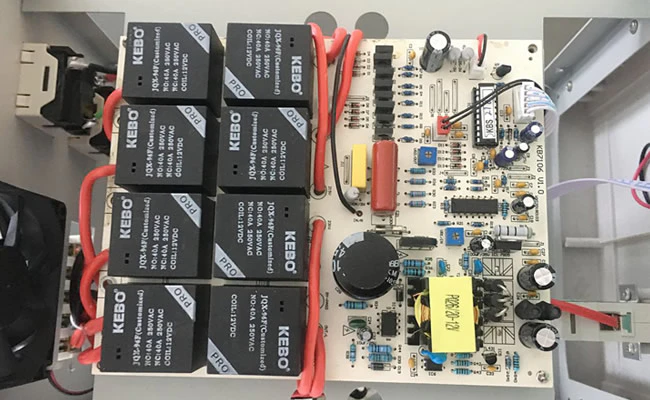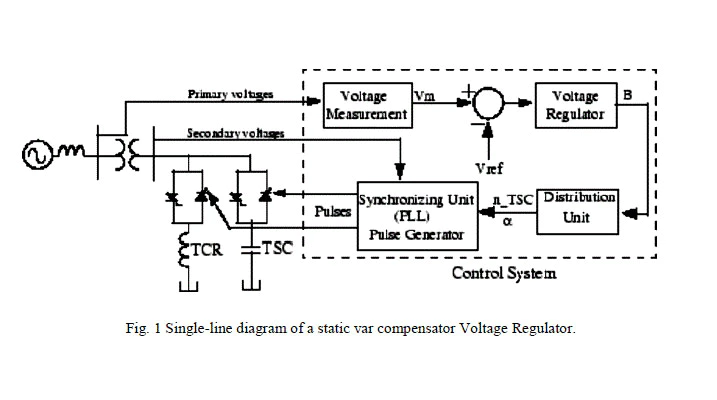Automatic Voltage Regulator (AVR)
2025-06-30
Automatic Voltage Regulator (AVR)
A voltage regulator is a device designed to automatically maintain a constant voltage level which allows equipment to operate in a safer environment and having prolong lifespan.
KEBO has three types of voltage stabilizers: Relay Type, Servo Motor Type, and Triac/Thyristor.

Servo Motor AVR (Single Phase and Three Phase)
Electromechanical regulators are also called voltage stabilizers which are commonly used to regulate voltage on AC power distribution lines. These regulators operate by using a servomechanism to select the appropriate tap on an auto transformer with multiple taps (servo type), or by moving the wiper on a continuously variable auto transformer. If the output voltage is not in the acceptable range, the servomechanism will switch the tap; change the turns ratio of the transformer, and to move the secondary voltage into the acceptable region. The controls provide a dead band wherein the controller will not act, preventing the controller from constantly adjusting the voltage as it varies by an acceptably small amount. Servo type stabilizers have high precision as 1% or 3%, they are used for devices which need precise adjustment for output voltage.
The Voltage regulators are sold mostly in third world countries like Bangladesh, Pakistan, Indonesia, Nigeria, etc. After careful market research, KEBO stabilizer offers alternative voltage ranges towards voltage fluctuations: 160-260V, 140-260V, 100-260V, 80-260V (for single phase), and 260-450V (for 3 phase). Customers can choose appropriate voltage range that they feel comfortable to use in their targeted market. We also offer OEM or ODM solutions for voltage regulators requested by our customers. YOU NAME IT, WE MAKE IT!

Relay Type AVR (Single Phase)
In relay type stabilizer, electronic circuit is controlled by relays set besides the transformer, comprising rectifier circuit, controller unit and other tiny components. The electronic circuit compares the output voltage with a reference value provided by build-in voltage source. Whenever the voltage rises or falls, the control circuit switches the corresponding relay connected to a desired tapping of the output voltage. Relay stabilizers usually have an output voltage accuracy of 10% or 8%. It is used for low rating home, office, or industrial appliances such as TV, Computer, Fan, etc. Nowadays, there is still many electrical equipment or machines suffering from unexpected voltage fluctuations, less durability, and other power interruptions. Therefore, relay stabilizers can provide relative stable voltage in order to protect different sources of equipment.

Triac Stabilizer (Thyristor/Silicon Controlled AVR)
Due to increased complexity of electrical power systems, there has been increasing demand in the stabilization of such systems.
Therefore, a voltage regulator using Thyristor Controlled is presented. The load voltage can be stabilized against supply voltage variation above and below the desired level. Boosting or bucking effect is performed in steps but with no distortion or phase-shift in the load voltage. Perfect adjustment of the load voltage is possible using independent phase control in a narrow range (in between the steps). A three-limb magnetic circuit is used such that flux of the boosting (or bucking) coil is varied in accordance with the action of a switched secondary circuit. Accordingly voltage current transients in the load circuit are avoided. The reaction of thyristor voltage stabilizer is as fast as 4 milliseconds concerning voltage fluctuation. Therefore, it can effectively protect heavy duty devices.
previous
Next
previous
Next
Related Blog
Related knowledge of voltage stabilizer
A voltage stabilizer is a device that stabilizes the output voltage. It is composed of a voltage regulating circuit, a control circuit, and a servo motor. When the input voltage or load changes, the control circuit samples, compares, and amplifies, and then drives the servo motor to rotate to change the position of the carbon brush of the voltage regulator. The coil turns ratio is automatically adjusted to keep the output voltage stable.
2025-05-15
How to solve the problem of low voltage at home?
With the development of society, the use of electricity has become more frequent and more diverse, from the original household electricity only for lighting, to the current air conditioning, cooking, computers, mobile phones and so on. However, electricity has also changed steadily with use. In some areas, the voltage is low, which causes the lights to be unable to illuminate, the air conditioner cannot be cooled, the computer often freezes and restarts, and the mobile phone cannot be charged. A series of low voltage problems; High, resulting in frequent burning of electrical components or electrical equipment. Therefore, the best way to solve these problems is to install a voltage stabilizer for your own power grid. When the grid voltage is unstable or the load changes, the voltage stabilizer will automatically sample the voltage stabilizer control circuit to send a signal to drive the servo motor, adjust the position of the stabilizer auto-voltage regulator carbon brush, and adjust the output voltage of the stabilizer to the rated value Value and reach a steady state.
2025-05-15
Why can't the input terminal of the Voltage Stabilizer be equipped with a leakage protector?
When using a voltage stabilizer, never use a leakage protector at the input of the regulator. This is a major principle used by automatic voltage regulators.
2025-05-15

